Dear friends,
When telling my family and friends that I was going back to where I taught 50 years ago, and that I had booked a flight out to Fera in the Maringe Lagoon off the island of Santa Isabel, they asked if I also had a hotel reservation. ‘What, no hotel near there, where will you stay?” my friends exclaimed. “It’ll be fine,” I told them, “Something will work out”. And so it did. Arriving in Fera, I was greeted at the airport and transferred by boat to The Mother’s Union Rest House in Jejevo where I stayed and was well looked after for a week or so before returning for a final couple of days in Honiara. My visit happened to coincide with a regional meeting of the Mother’s Union of Isabel (held every three years), and so I had plenty of interesting company at the Rest House. While there I was thrilled to be able to catch up with a fellow teacher and several students who had been in my class.
I am very happy to share a few of the photos and some stories from my stay at Jejevo close to Buala on the Island of Isabel. Of course, there have been many changes, but the friendliness and hospitality of the people are as welcoming as ever.
Below is a map of the Island of Santa Isabel from an old school atlas of 50 years ago when I taught there, with my travels around the island marked in red. This stay I was just in the Maringe Lagoon area where Buala the capital of the island is and Tasia, the island where I taught is also marked.
Fifty years ago it took three days by boat from Honiara – to Kia, then Estrella Bay and then Tasia.
This time it took just 40 minutes by small propeller plane to reach the airport on Fera Island opposite Buala.
Leaving Honiara with Solomons Air, destination Fera, Santa Isabel.
The southern end of Santa Isabel.
A typical coastal village of Isabel, many still only able to be reached by boat or by walking.
Flying into the beautiful green airstrip on Fera Island.
Right on the beach, the delightfully small airport building caters for the one or two flights a day.
Passing another boat as we travelled from the island airstrip across the lagoon to Jejevo village.
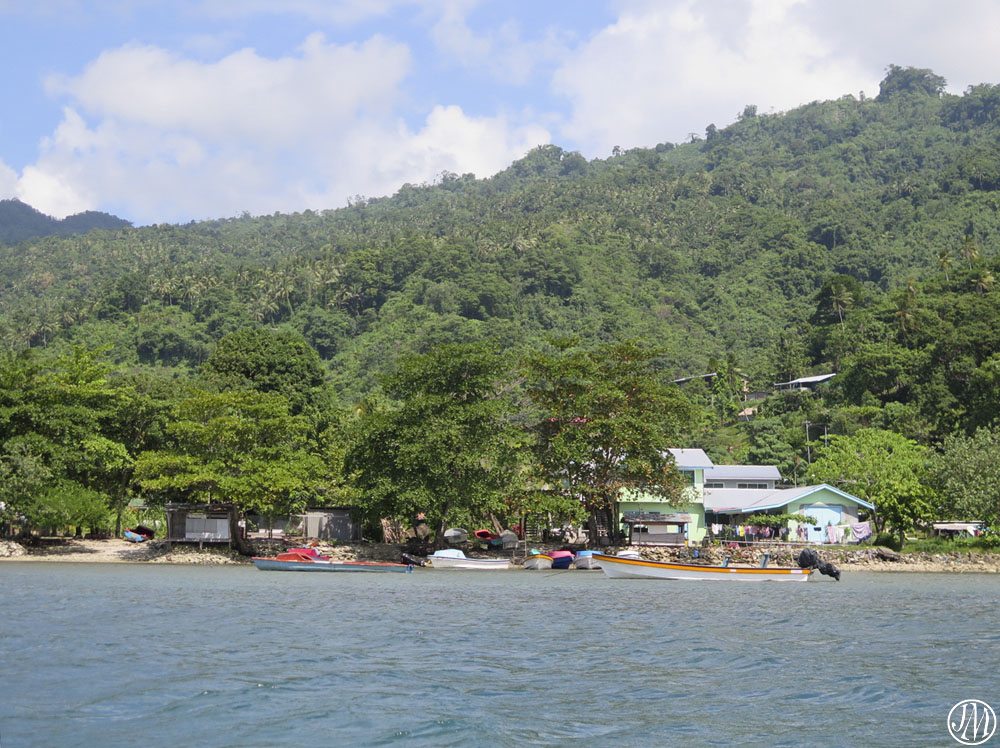
The boat harbour at Jejevo village.
My home for nine days was at the Mothers Union Rest House.
On the evening of my first day, I walked to the village, stopping to chat to some young footballers.
Down at the beach, I looked across to my island of Tasia where I taught and it was almost magical to see a rainbow,
a double even, landing right on the centre of the island, as though to say, “Here I am, remember me?”
At the cookhouse by the beach, preparations were well underway for a feast the following day for some visiting dignitaries.
And that evening’s meal was being dished out from the stone ovens.
On the stone jetty on the other side of the village, the kids were hanging out and joking.
Tasia Island behind with the evening sun lighting up the forest.
A perfect spot from which to talk with your friends and review the day.
Big sister, little brother.
Walking back and looking towards the west, the sunset lighting the northern islands of the Maringe Lagoon.
The following day the Mother’s Union began their meeting with speeches, presentations and workshops on their work across the region focusing on mother and child care, family life, conservation issues, community activities etc. I followed for some of the sessions and especially enjoyed their enthusiastic and amusing role plays and their singing of educational songs.
Reporting back from one of the working groups in lively fashion.
Two of the Mothers’ Union representatives were my students way back then, and later both trained as nurses. The old class photo with Rebecca fourth from left in the front row and Janet on the far right, front row.
Rebecca (left) and Janet today
Over the next few days, I wandered in the area, chatted with people like this woman in the market at Buala.
Neighbourhood kids enjoying a break after classes.
I also had several visitors from my old students who heard on the grapevine that I was back in town. Some walked a couple of hours to visit, some had to walk then hitch a ride on a lorry. And the ones I did meet, told me stories of other classmates, some of who had already passed away, others moved to the city or other districts.
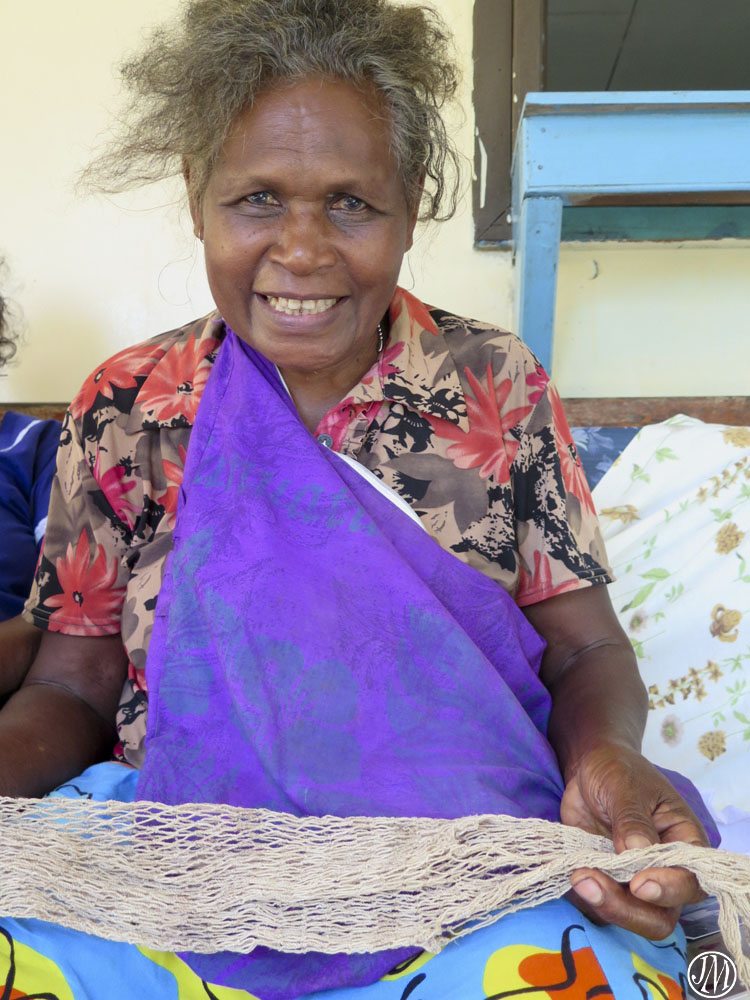
This is Annette who walked for a couple of hours from her village of Tiratonga high on the ridge of the island. She told me she had trained as a teacher and taught for 6 years before marrying and having 5 children. Later she taught at her local kindergarten but her daughter has now taken over that task. She now stays at home and enjoys working in the garden and looking after her 6 ‘grannies” (grandchildren.) She brought me a present of a string bag that she had made.
Another old student visitor was Zipporah Cecilia who came bearing a bag of delicious bananas from her garden, and on a second visit brought me another present. She also lives quite far away and is a storekeeper in her village but comes twice a week to the market at Buala to sell her garden produce. She has six children, three of whom are married and between them have, so far, given her 6 grannies. Two of her children are doing training in Honiara in business and agriculture.
Later, back in Honiara in Honiara, I met some more of my old students. Here I am with Judy, the Mothers Union House Secretary on the left and then ex-students Susan, Caroline and Rachel. We had such a fun lunch recalling those by-gone days.
At the Mother’s Union House, I also often relaxed outside with the cooking team, chatting while they prepared the meals for the group of more than 30 women. There was always hot water on the go, so tea and coffee mix with hard navy biscuits or freshly baked buns served as breakfast and morning and afternoon breaks.
This is Rosita, showing off a beautiful, freshly caught yellow-fin tuna she was about to prepare.
Patricia shucking and cleaning the shellfish.
Anika and Grace peeling the kumara.
Lunch is ready.
On the last day of the Mother’s Union Meeting, we all walked to the village of Buala to attend a church service to bless the newly elected office bearers for the next three years and that was followed by present-giving from the different regional groups, a lot of singing, a pretty impressive spread of food and dancing. Many of the local families joined in the celebrations too, with the kids watching from the sides.
As we crossed the stream coming into Buala village, this little boy was cooling off and making sure his shorts didn’t get wet.
A mother escorts her little family home after they had been out playing with their homemade ‘vehicles’.
The beautiful church at Buala where the service was held.
This young baby was just a couple of months old and being shown off by his grandmother.
Where there’s sand and a stick there’s a possibility to draw or play.
Not sure about that photographer lady.
Beautiful colours from the beach by the village hall as the sun set.
Some of the people at the back of the hall which was open on all sides to let the cooling sea breezes waft through.
Some waited outside, chatting and carrying sleeping babies.
This little girl was almost brave enough to make it all the way up the stairs to the hall.
Watching the adults from the edge of the hall, and …
… from the vantage point of the kitchen table.
Around 10 pm the village headman who had been dancing with the best of us announced it was time to call it a night and to let the village sleep. As we walked back along the road to Jejevo by torchlight, we were treated to this most glorious sight.
A nearly full moon lighting the silhouette of a tall tree, and a silvery path across the lagoon to my island, Tasia.
Another magical moment for my memories.
The fourth and last blog from the Solomons trip will be about my visit to the village of Kolomosu further down the coast and where I used to spend my weekends when I taught at the school.
All good wishes and until soon,
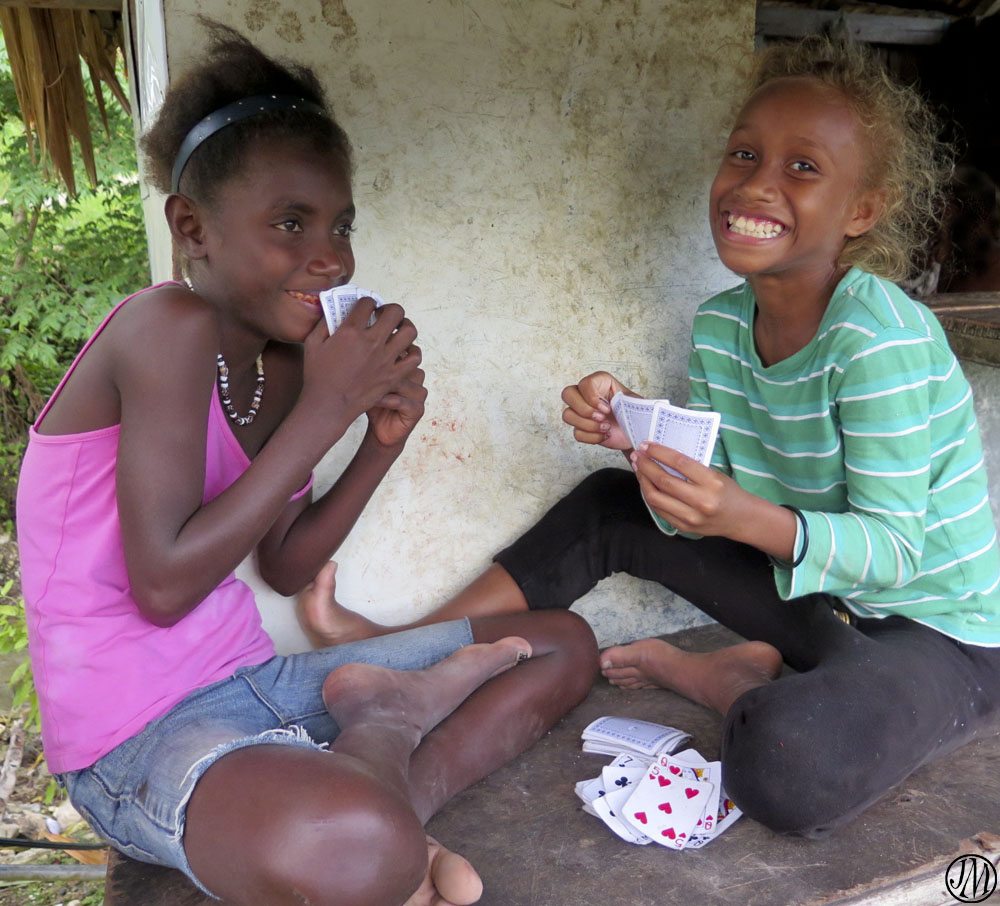
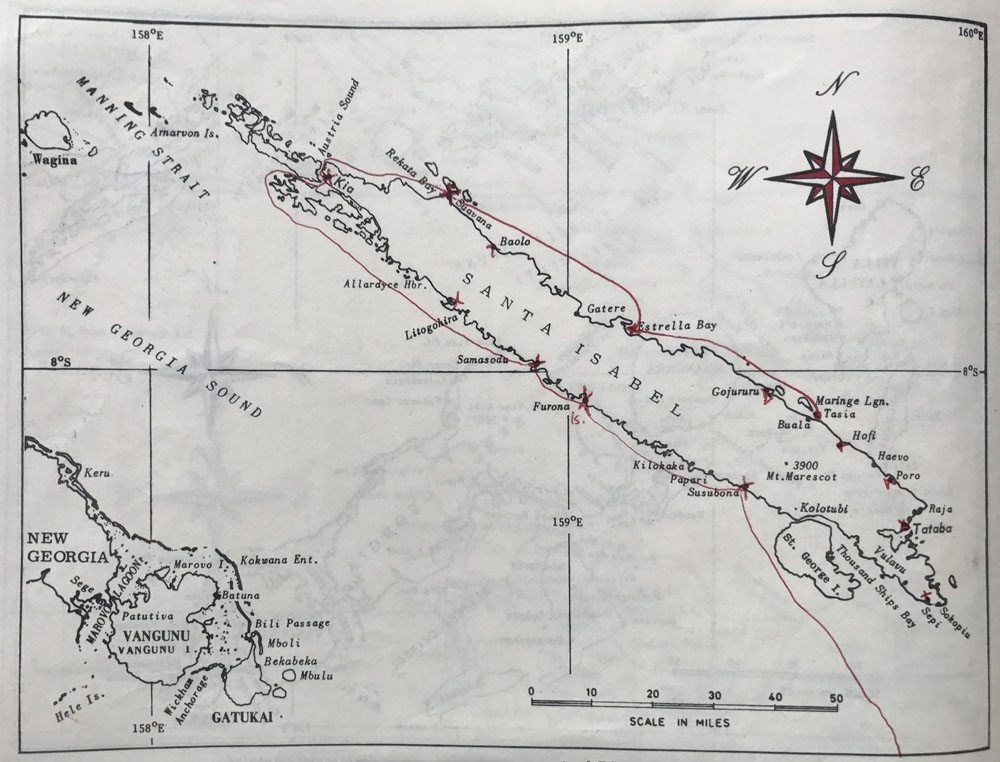
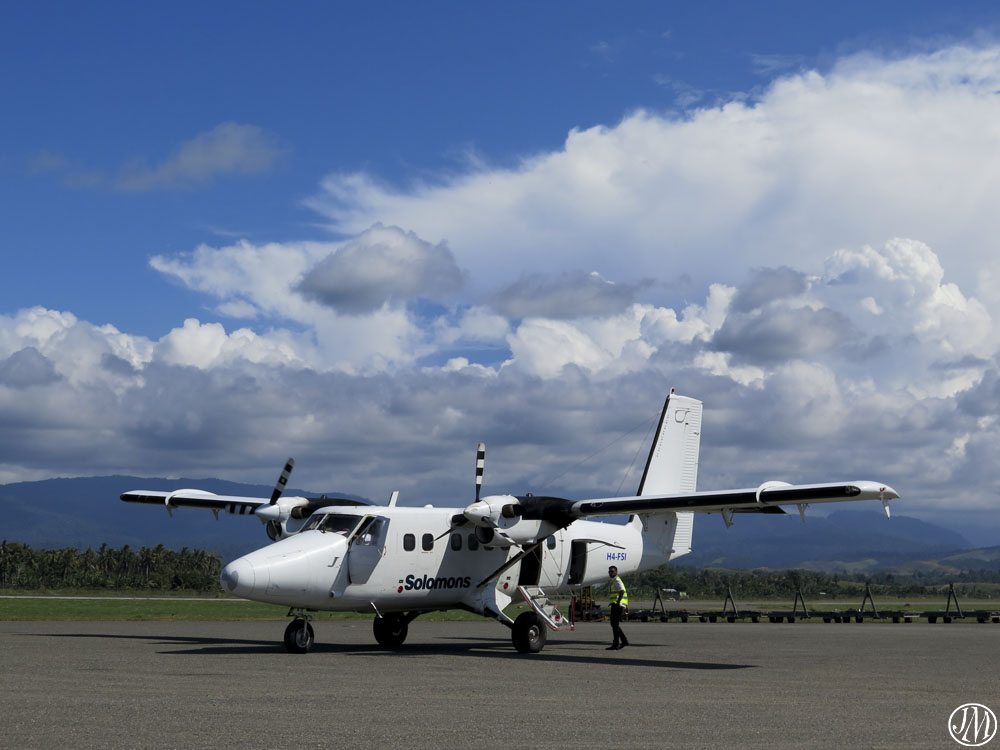
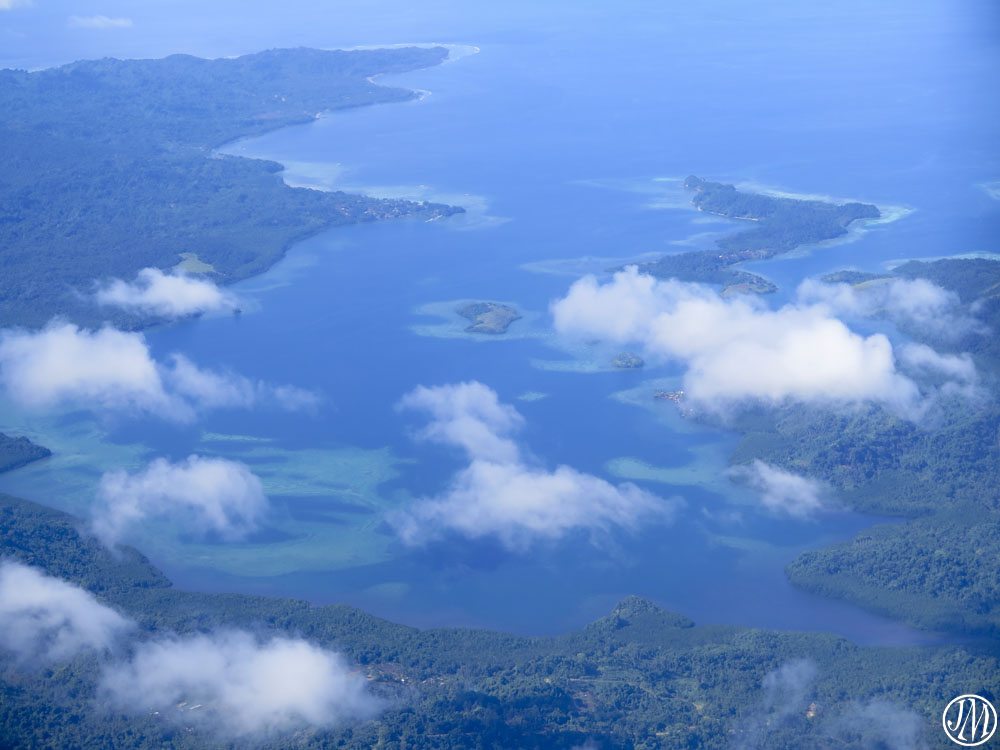
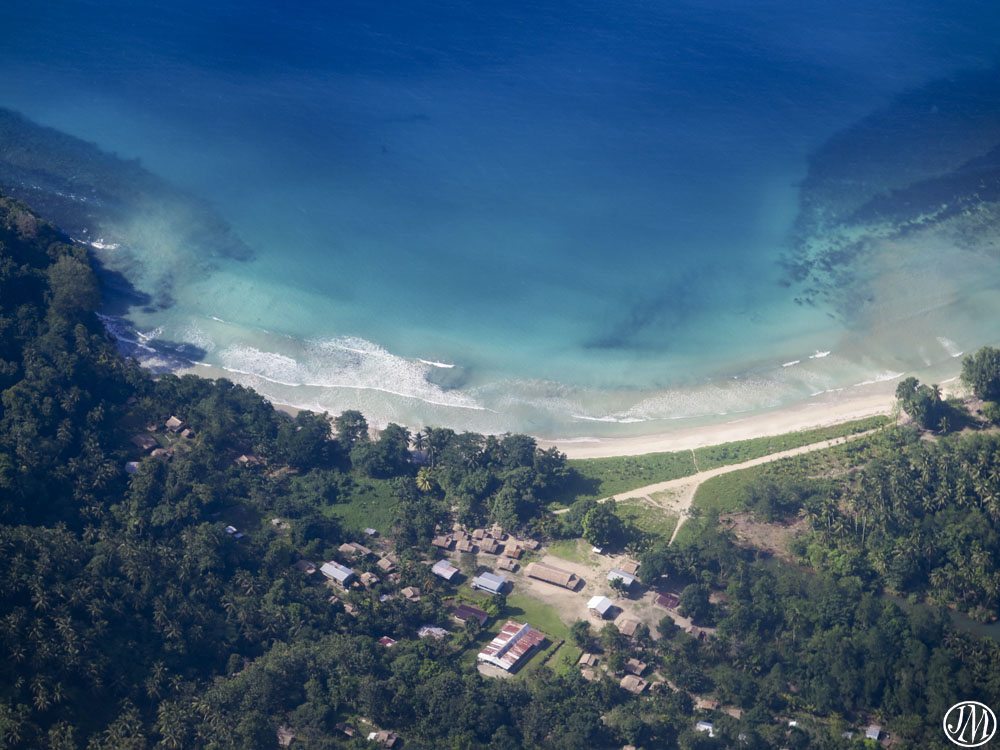
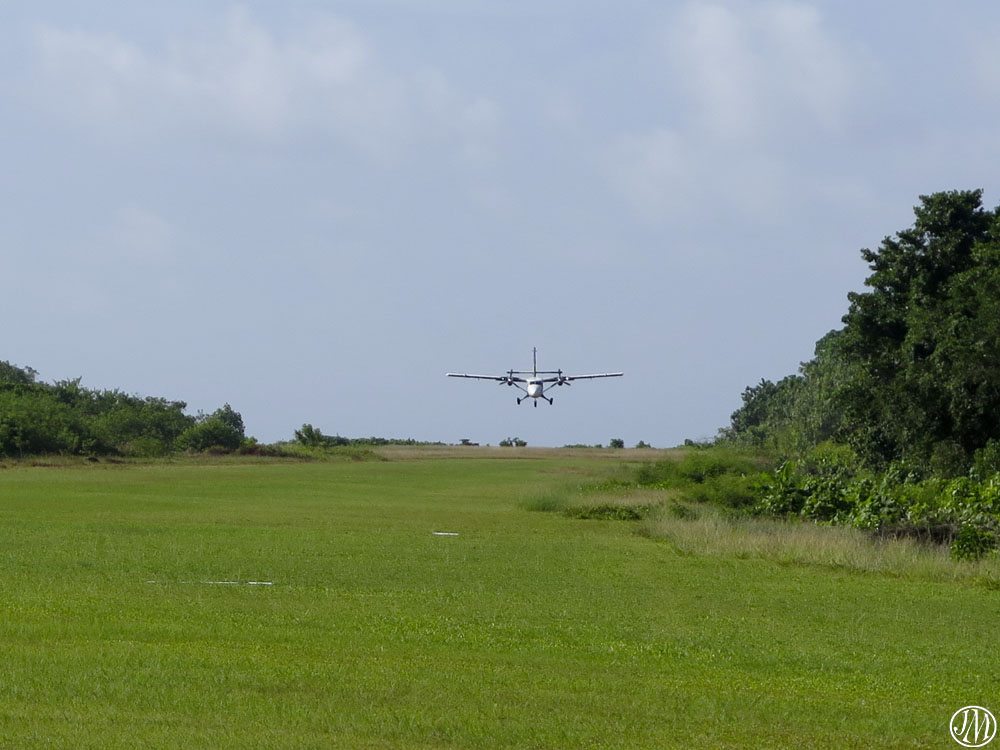
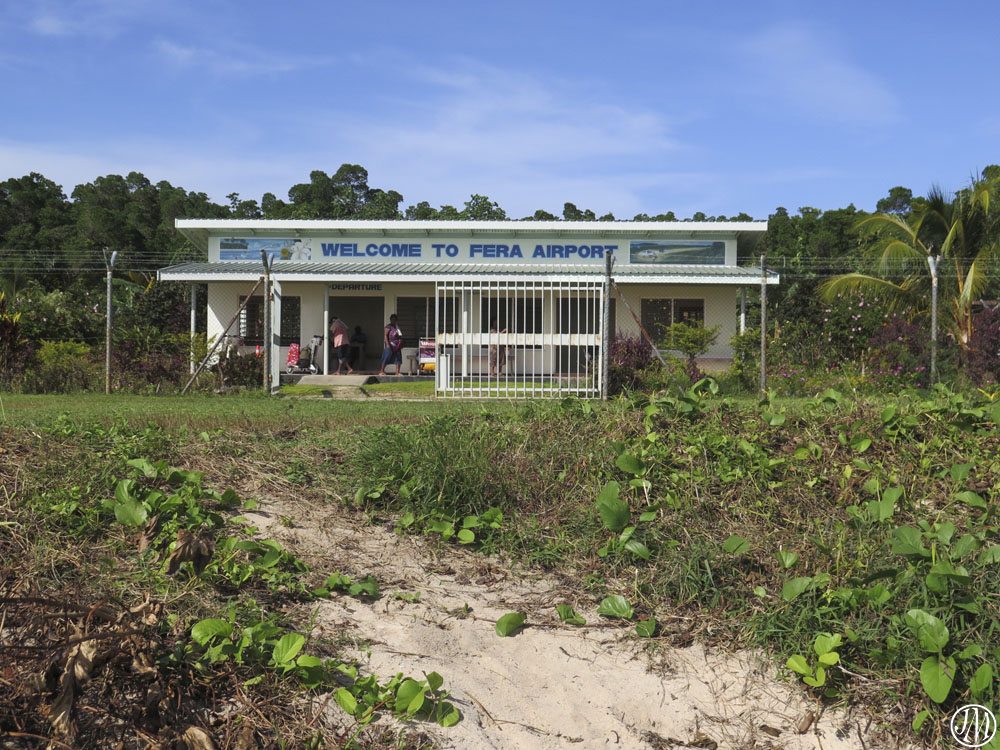
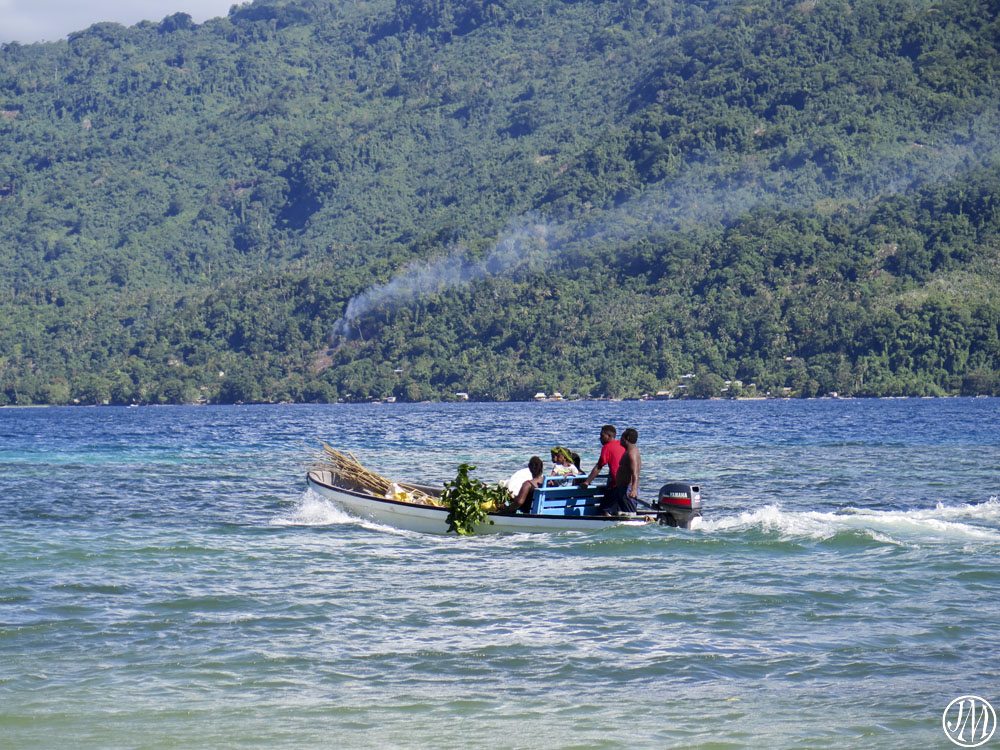
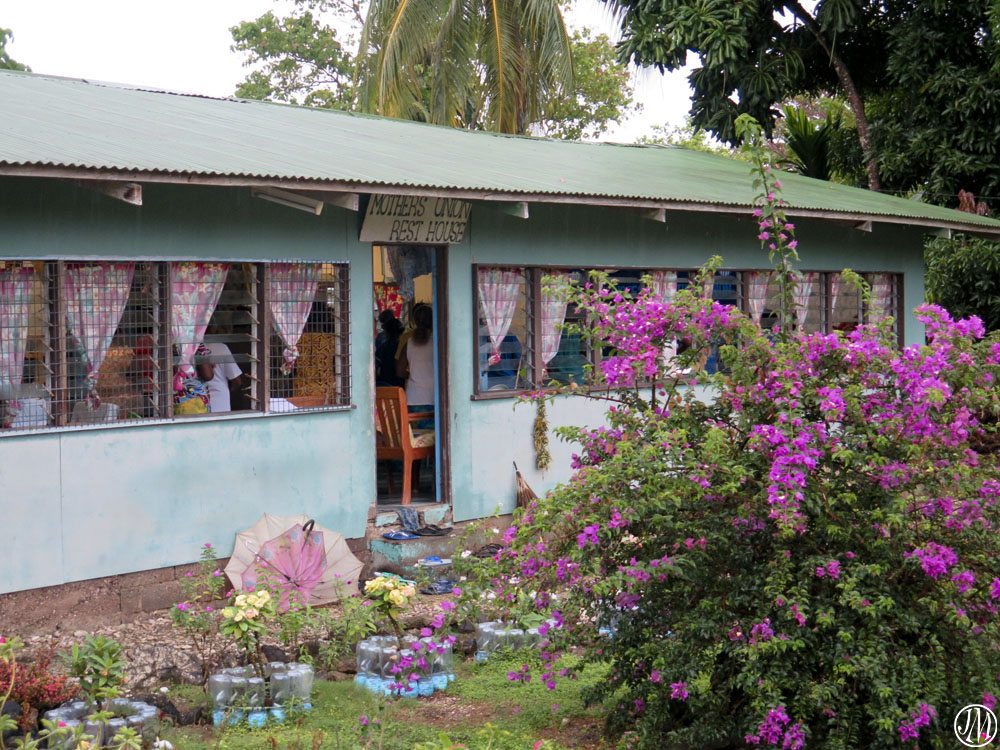
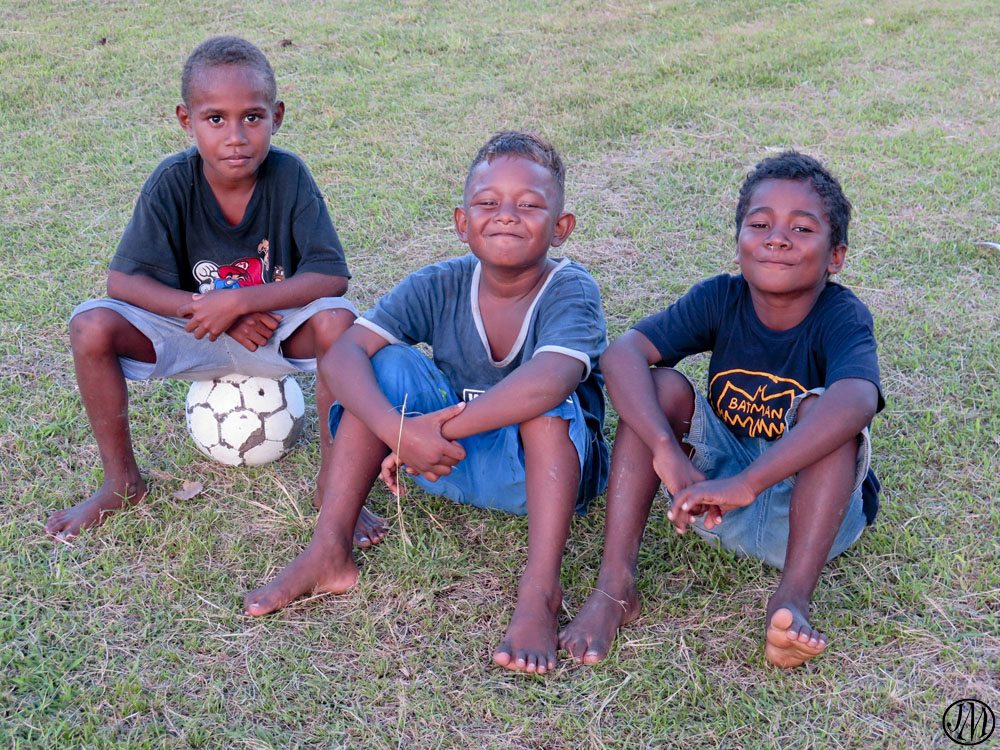
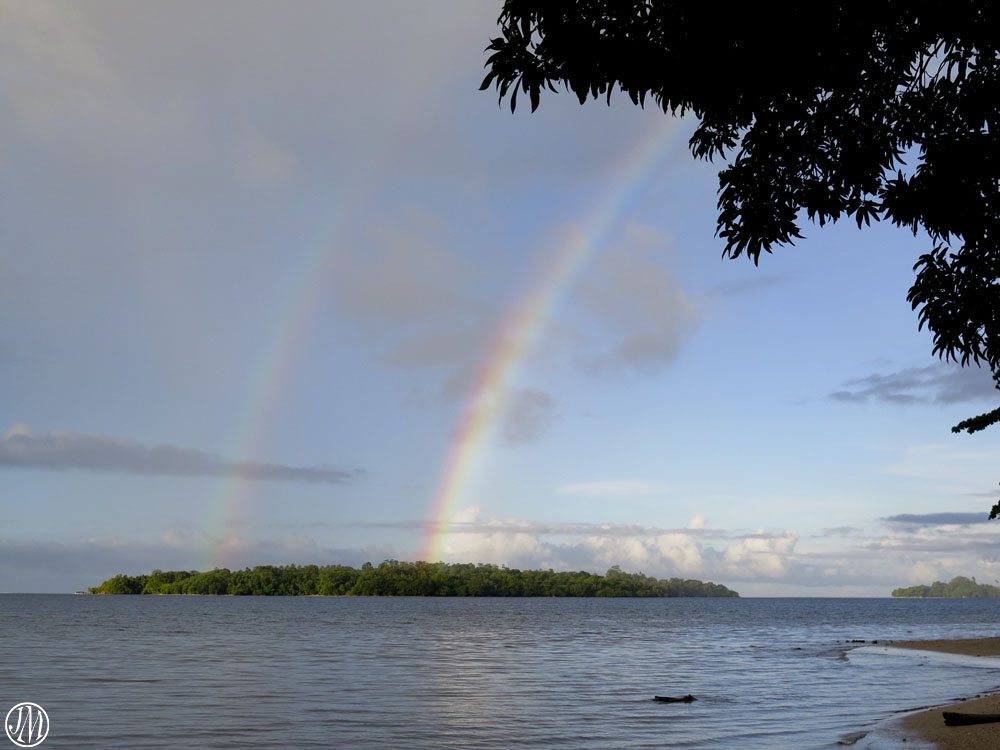
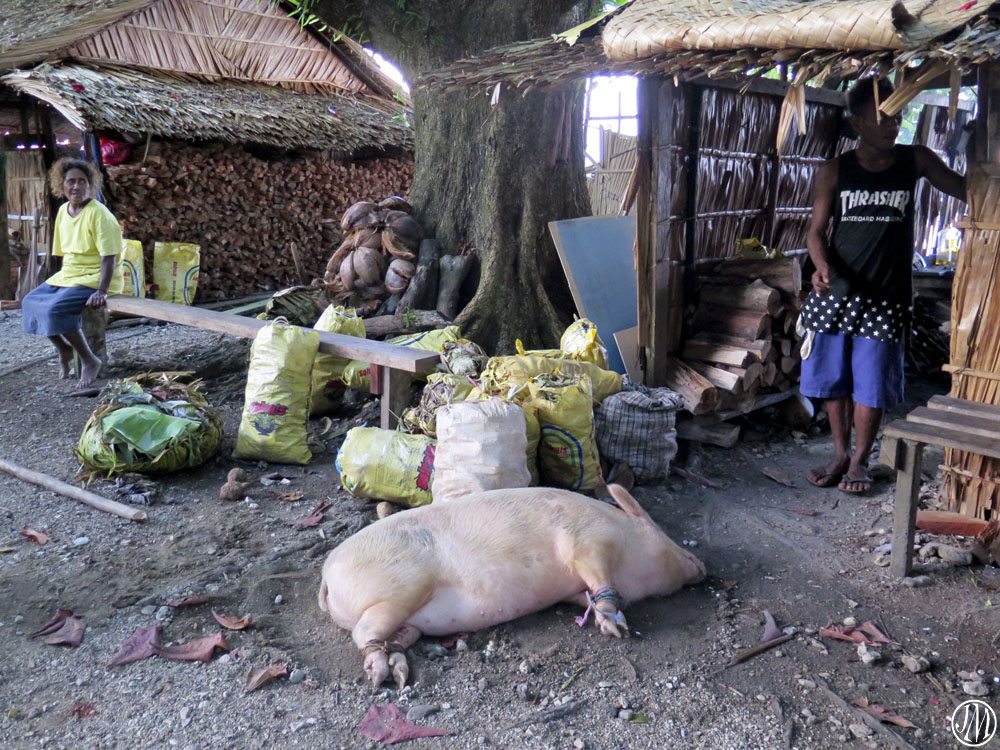
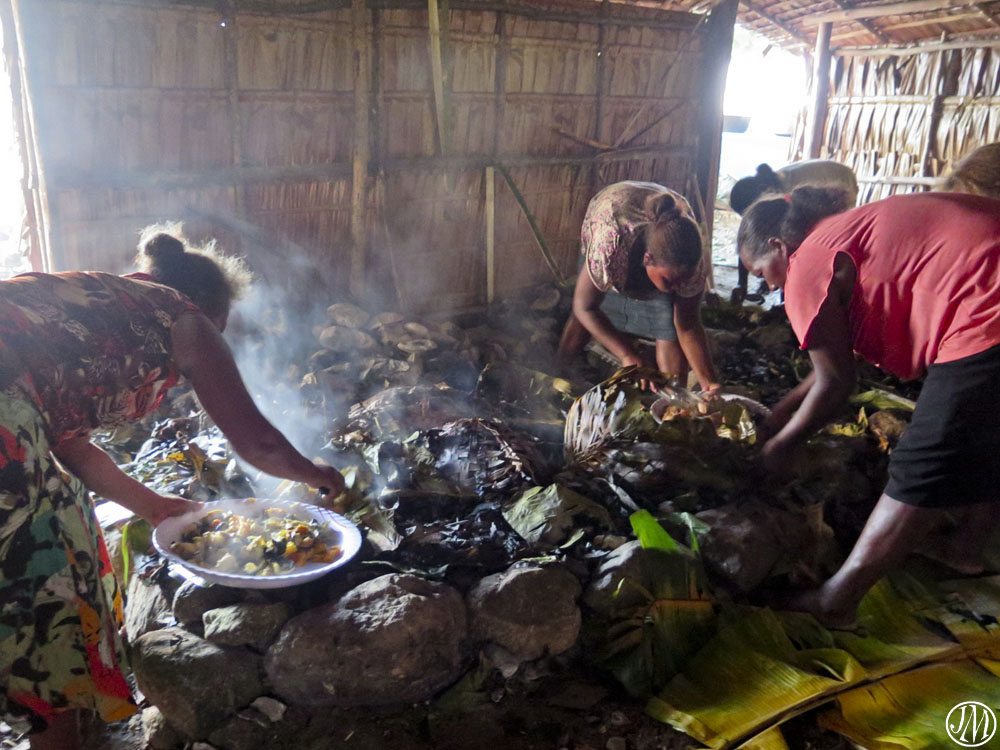
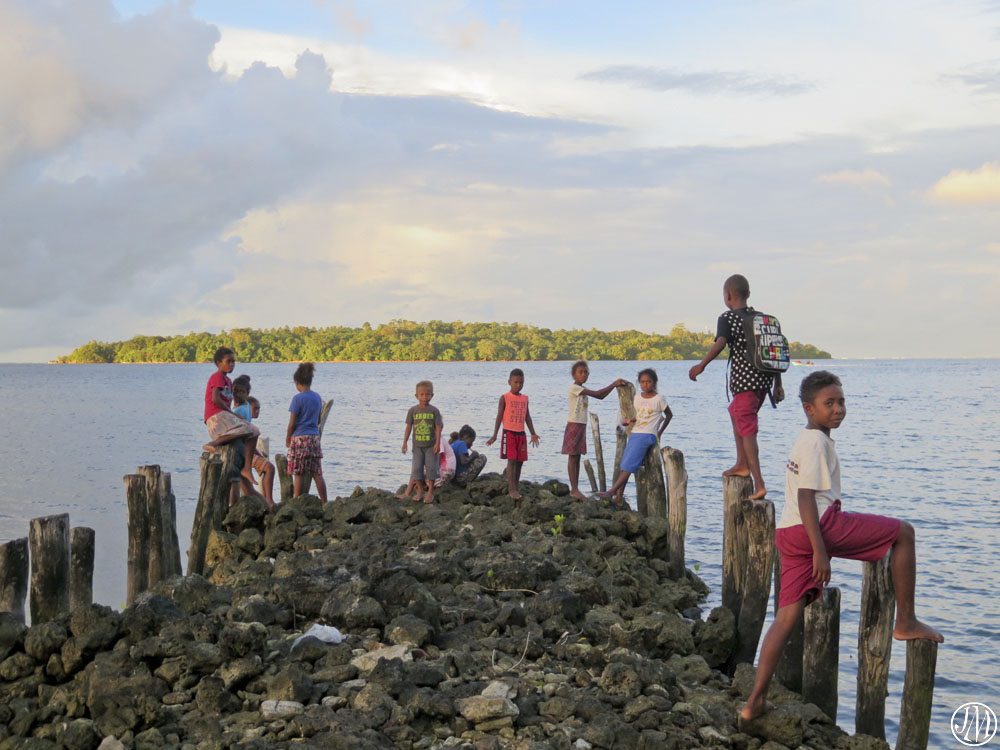
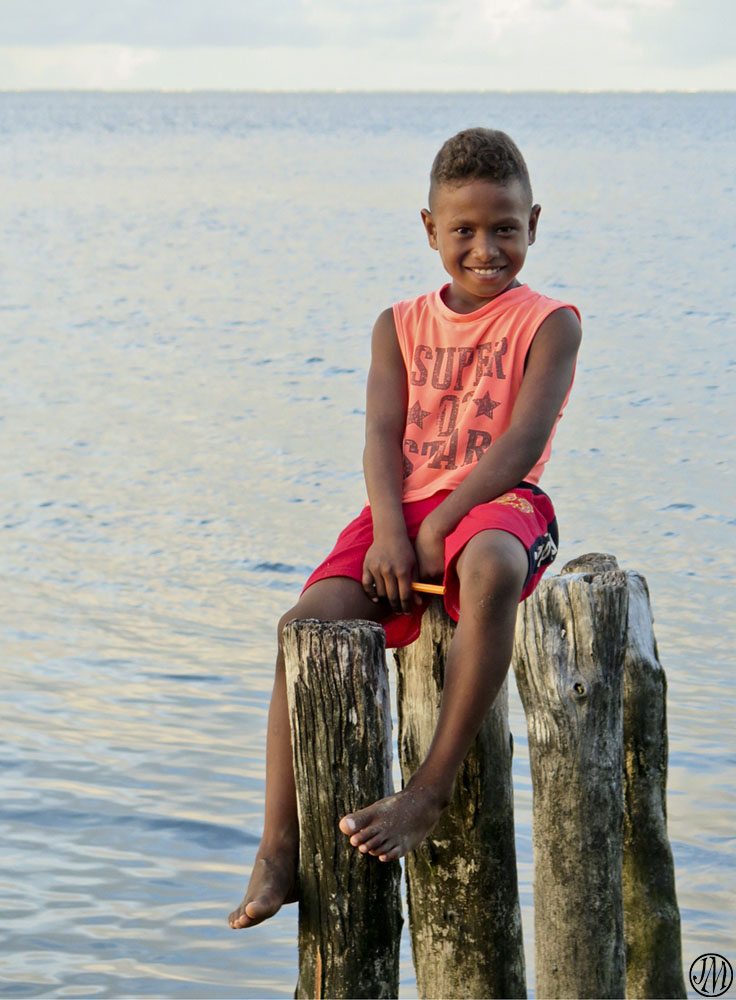
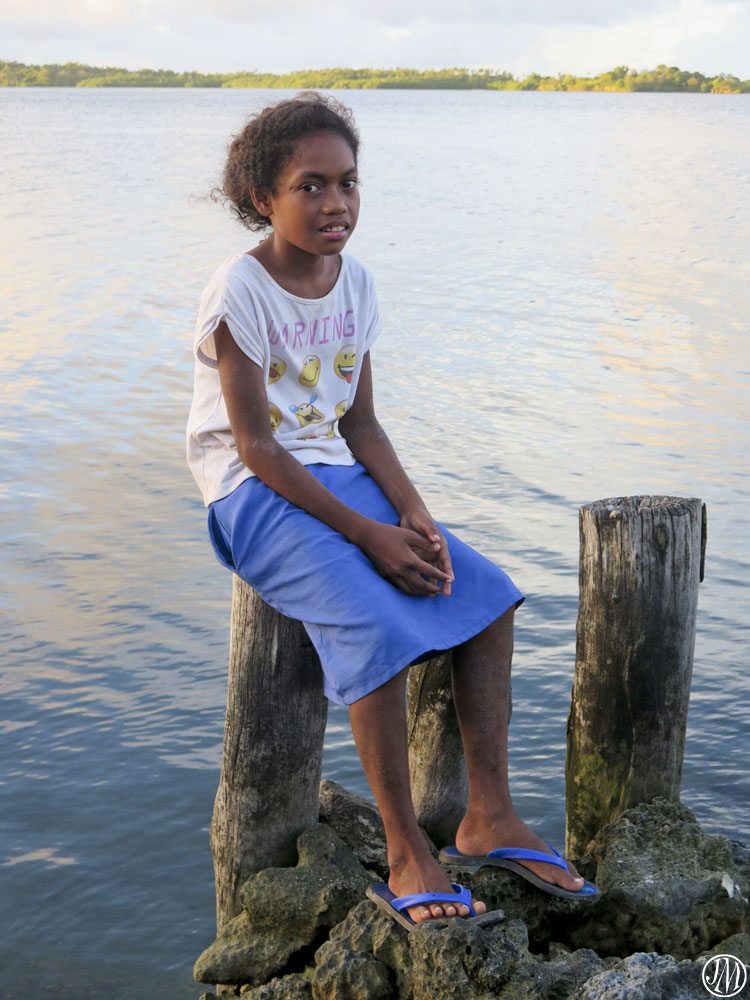
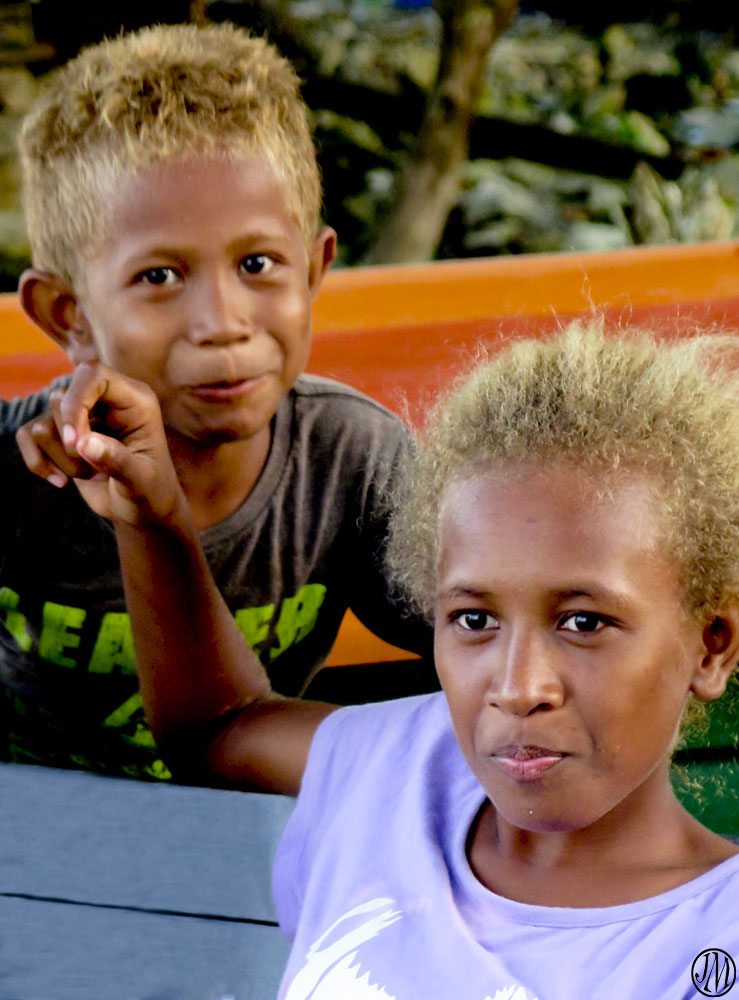
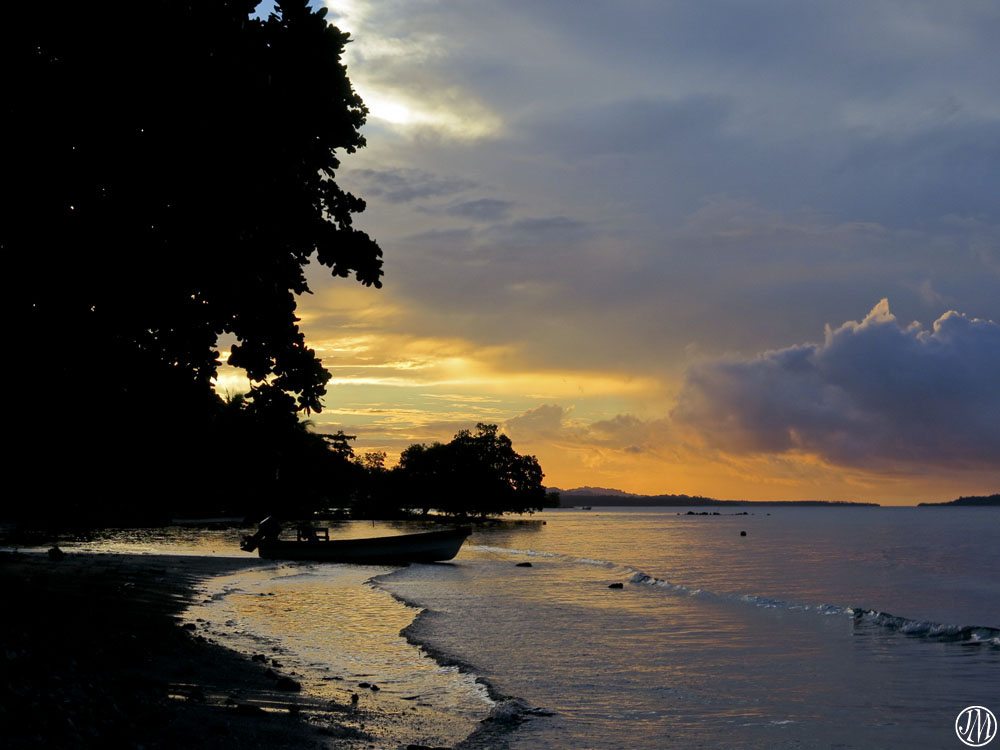
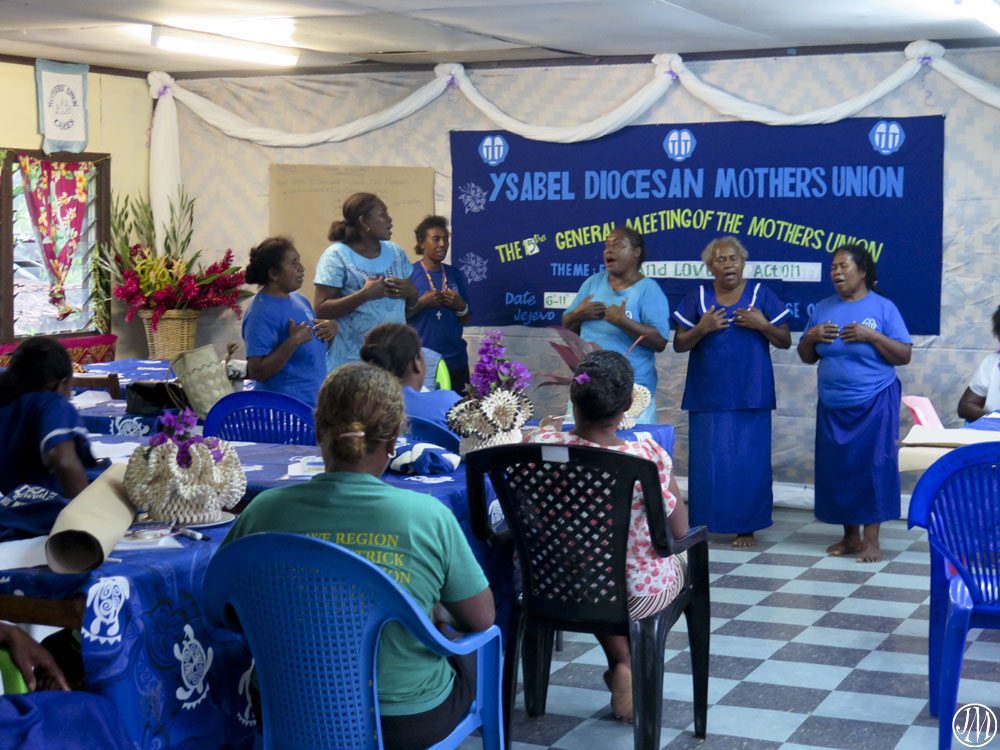
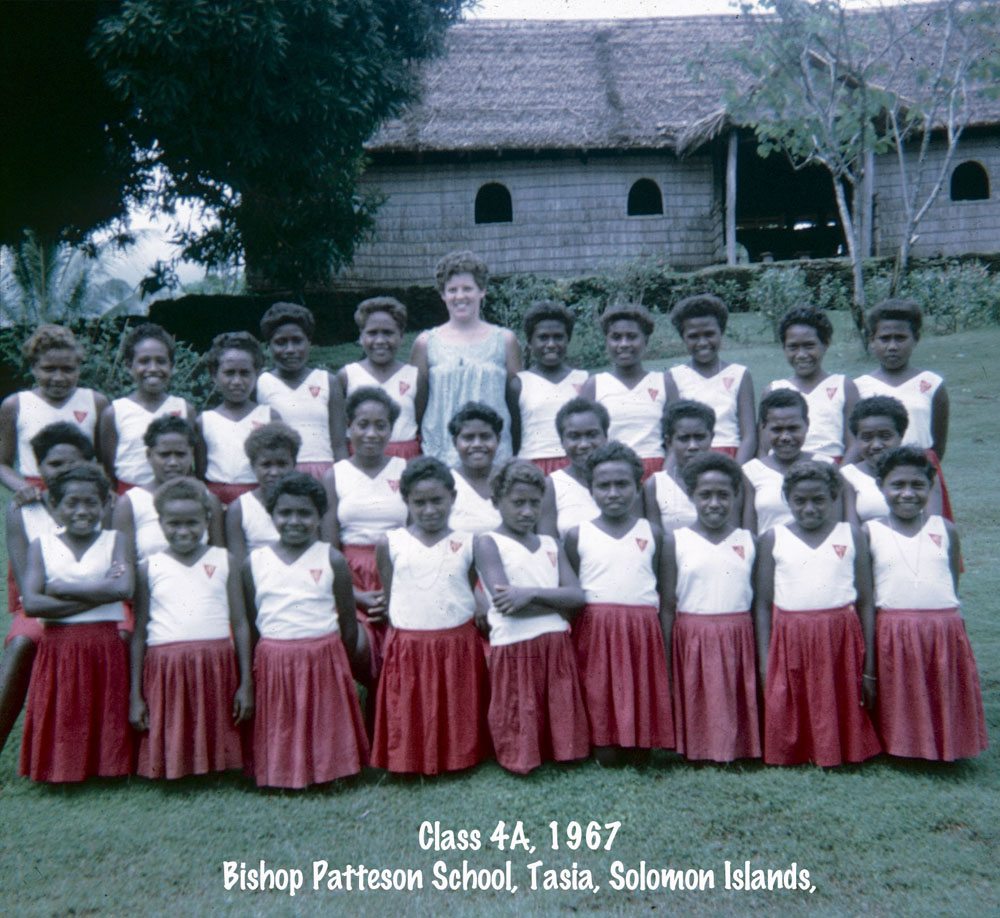
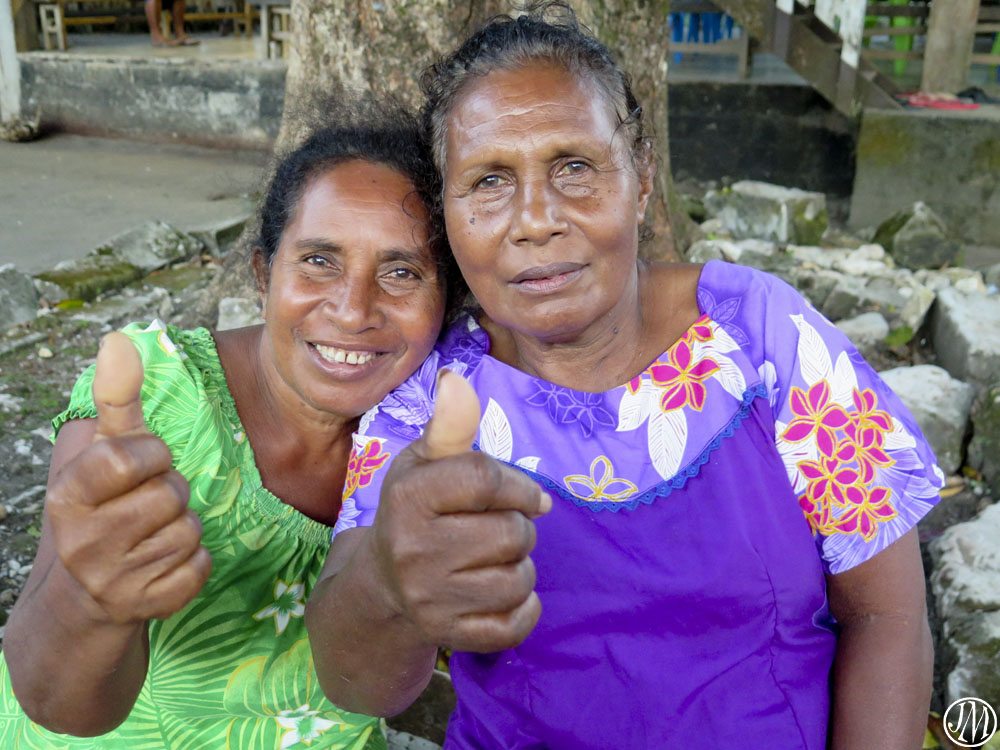
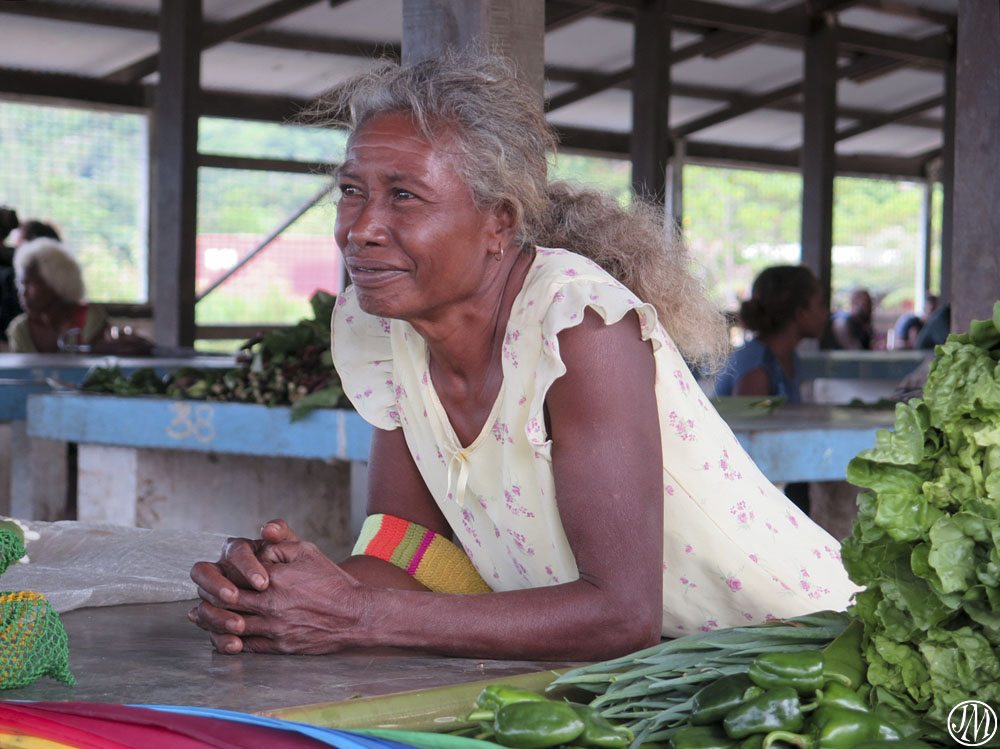
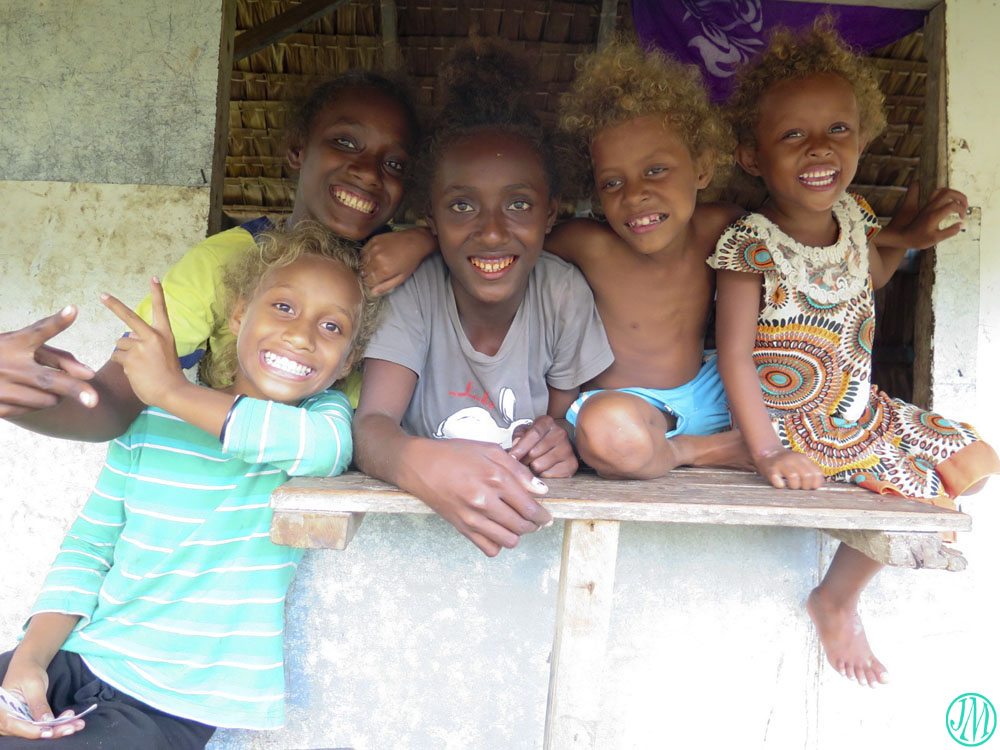
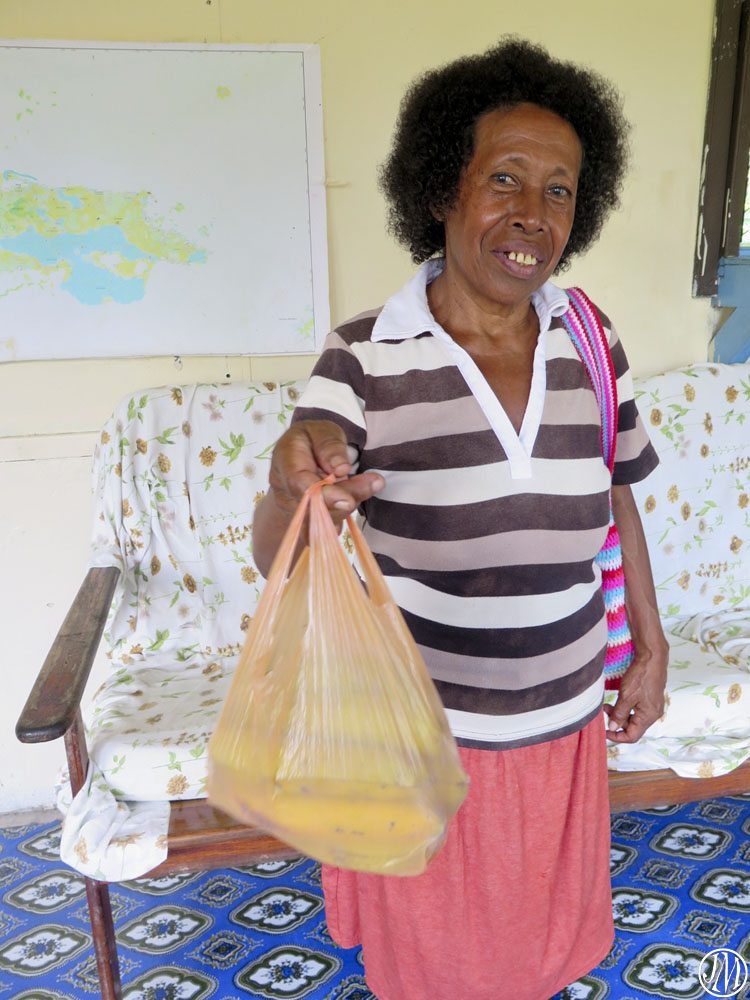
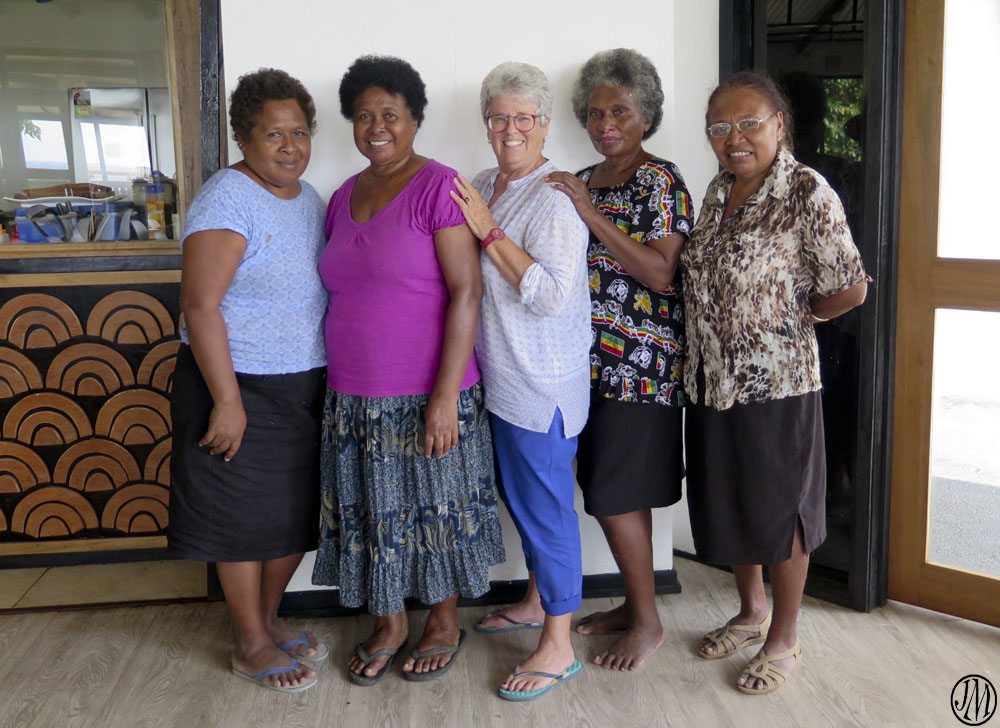
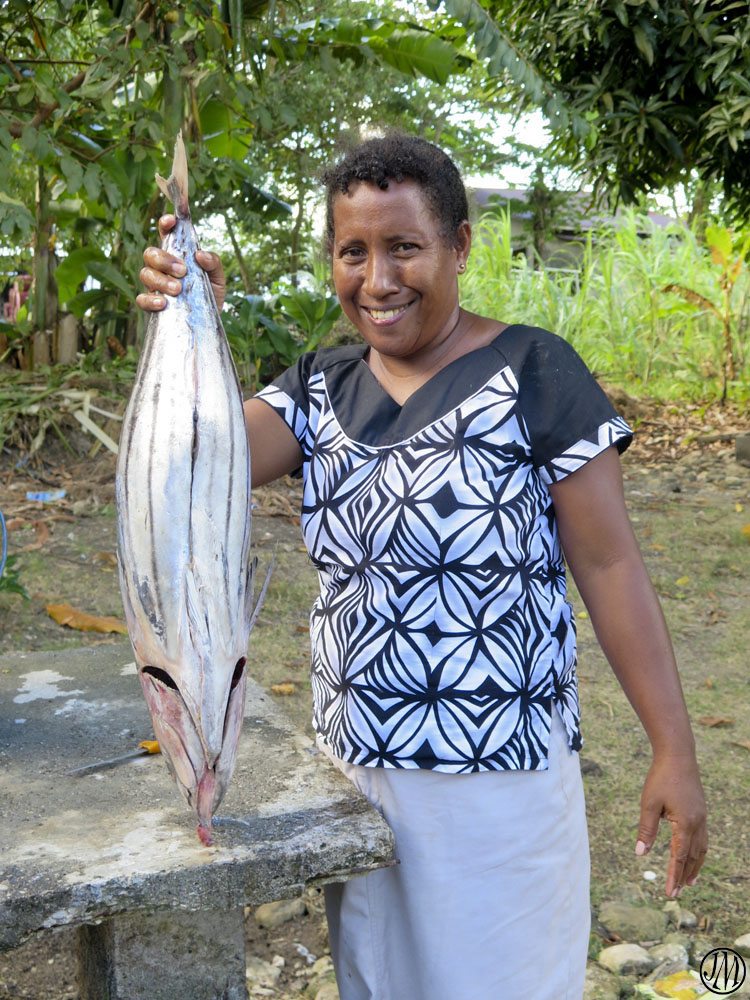
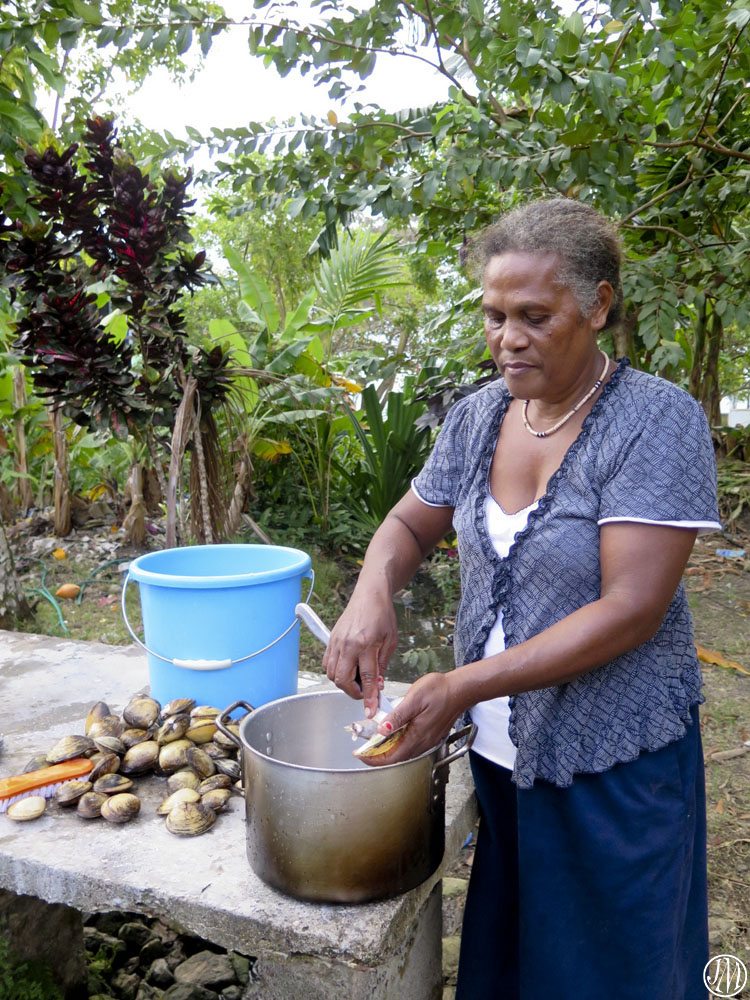
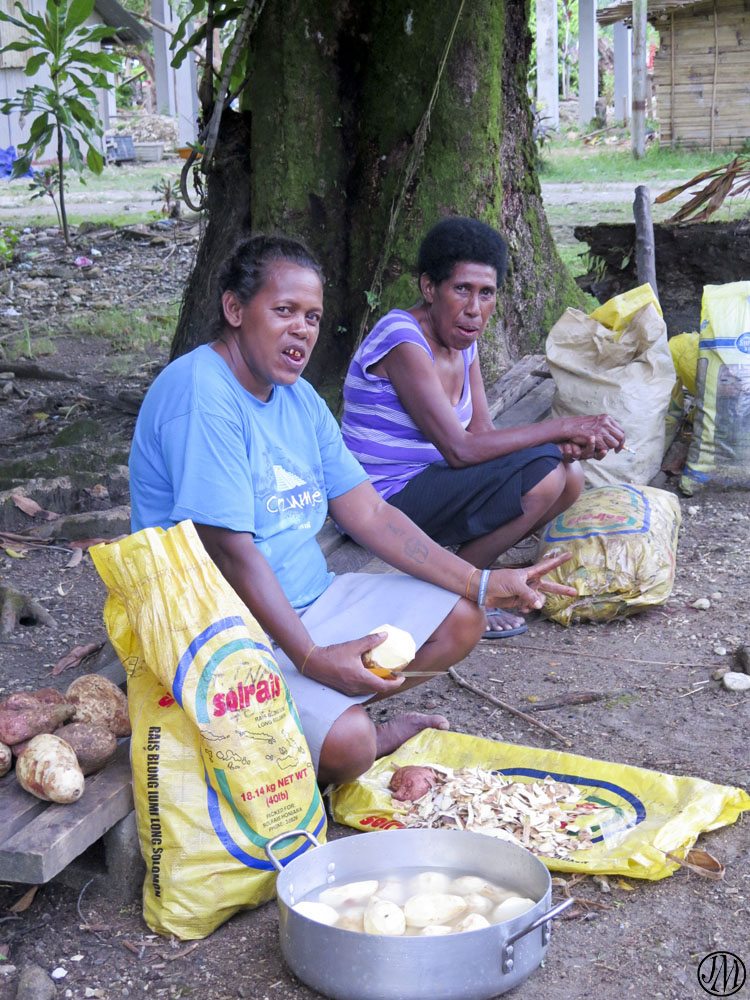
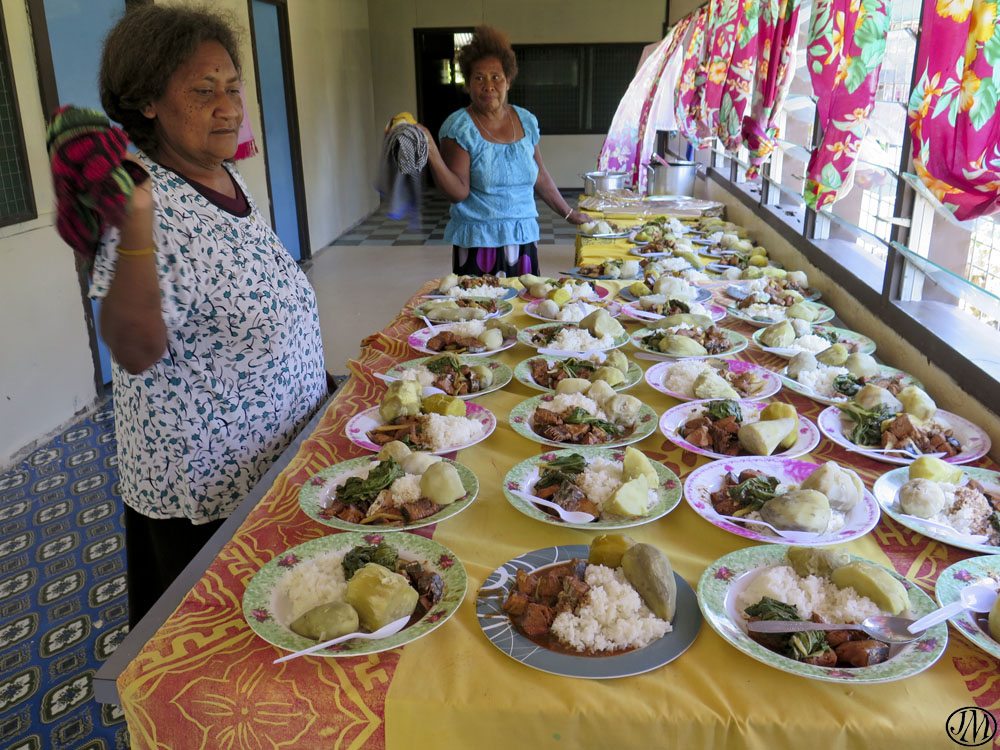
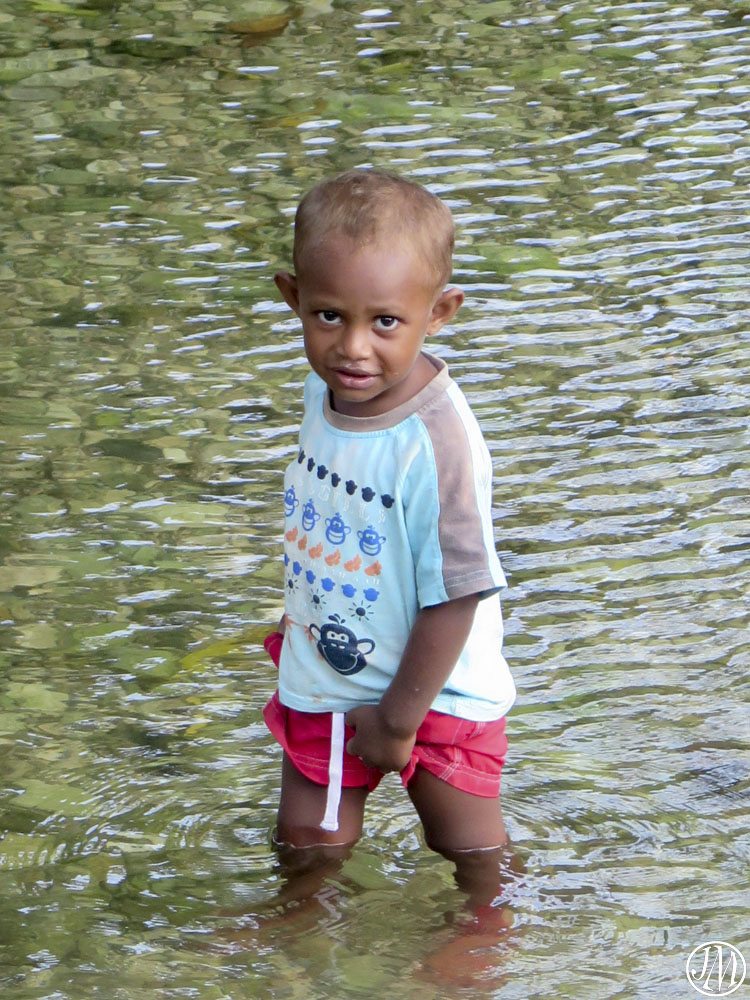
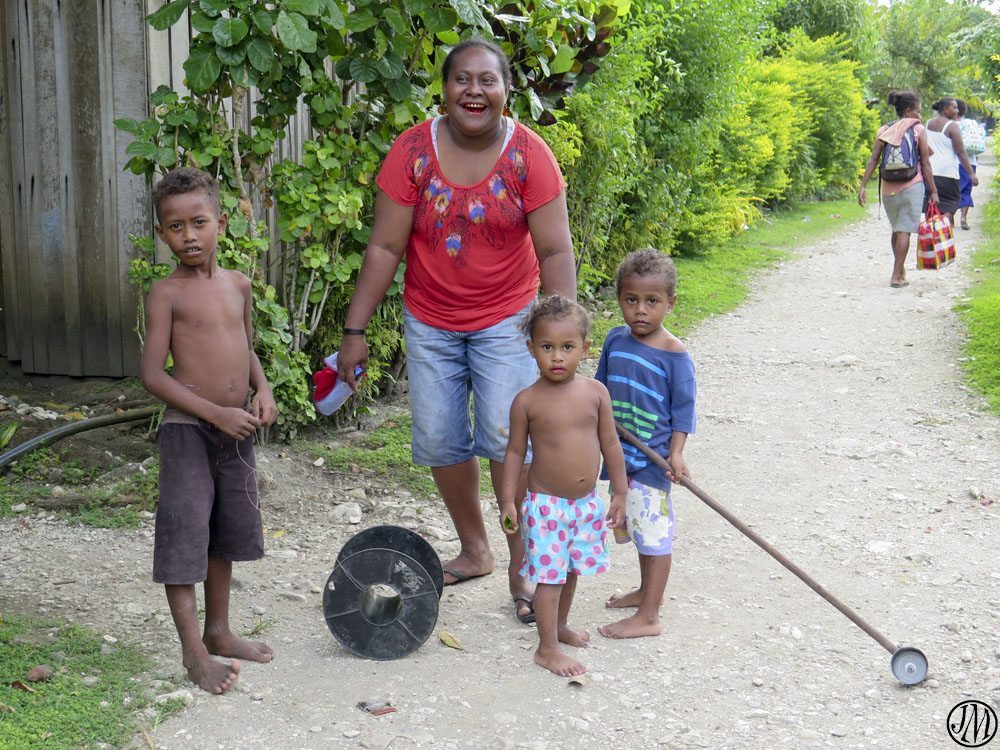
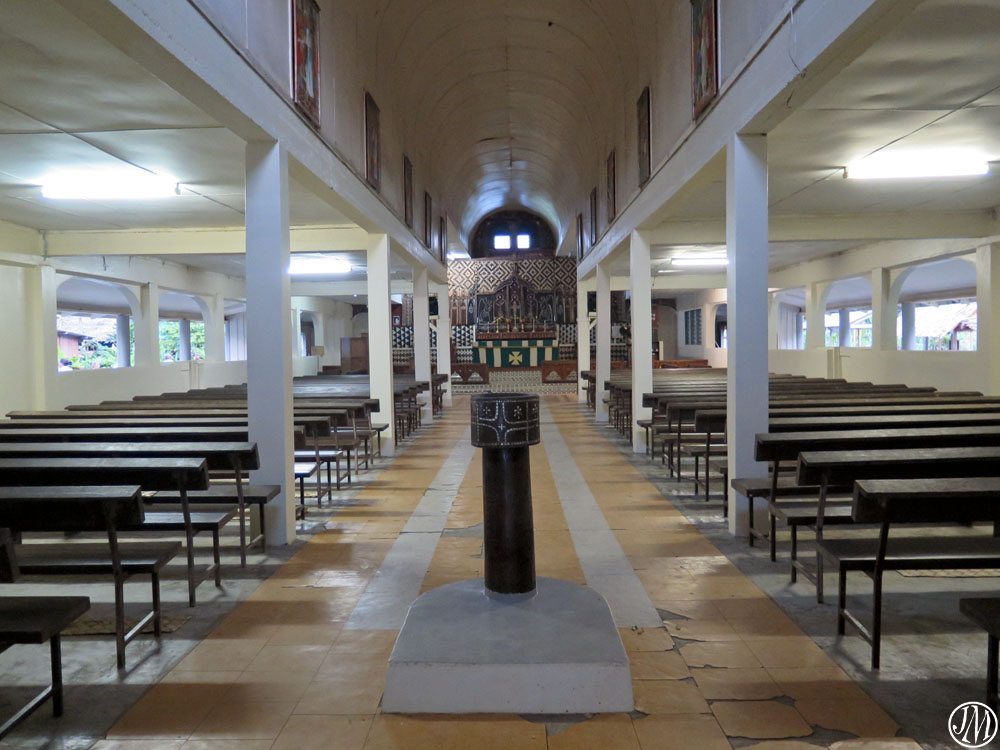
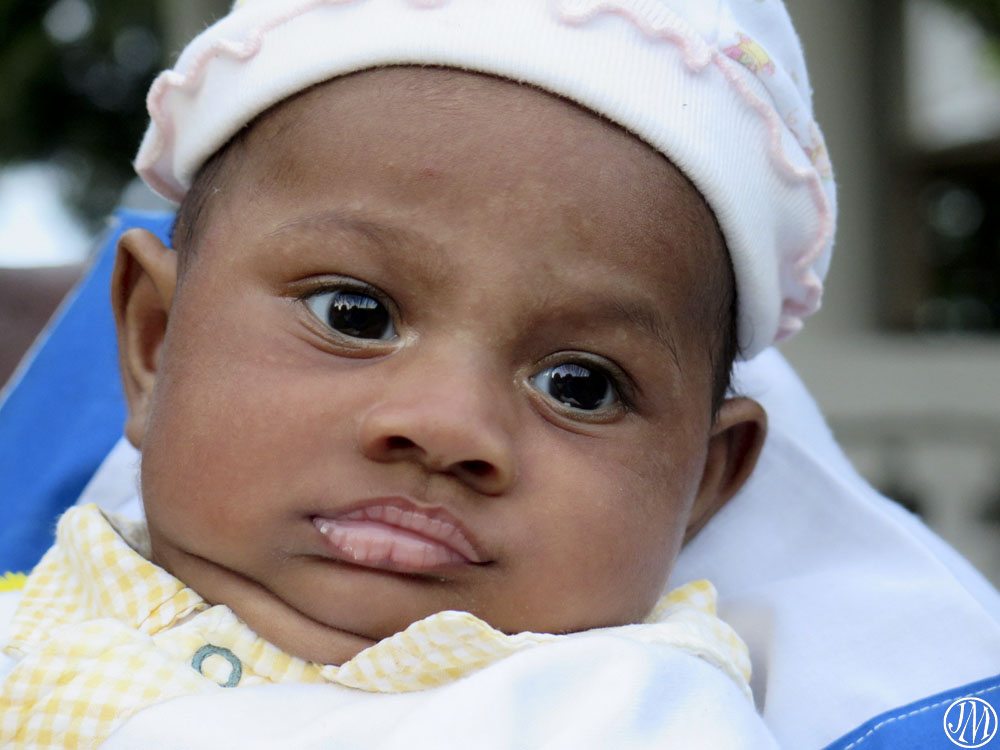
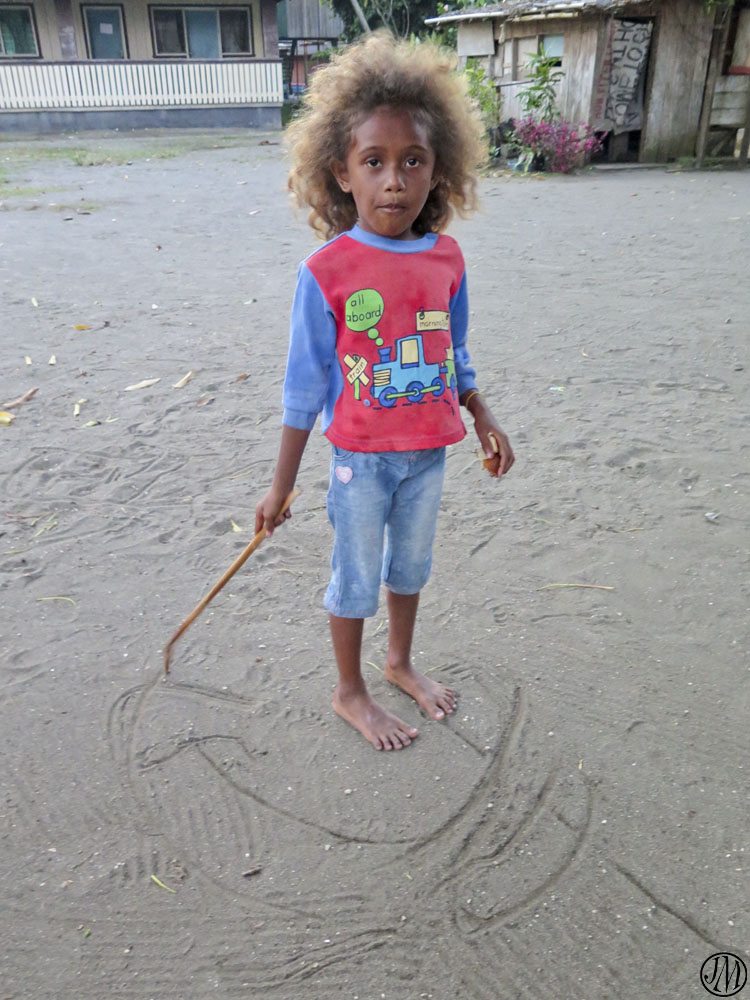
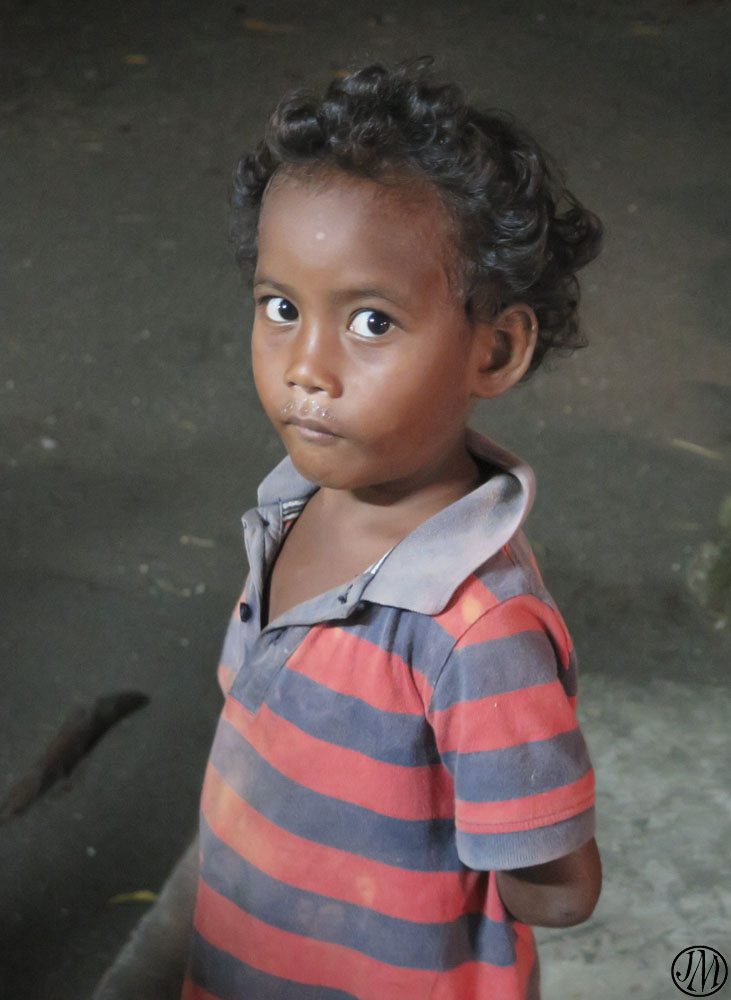
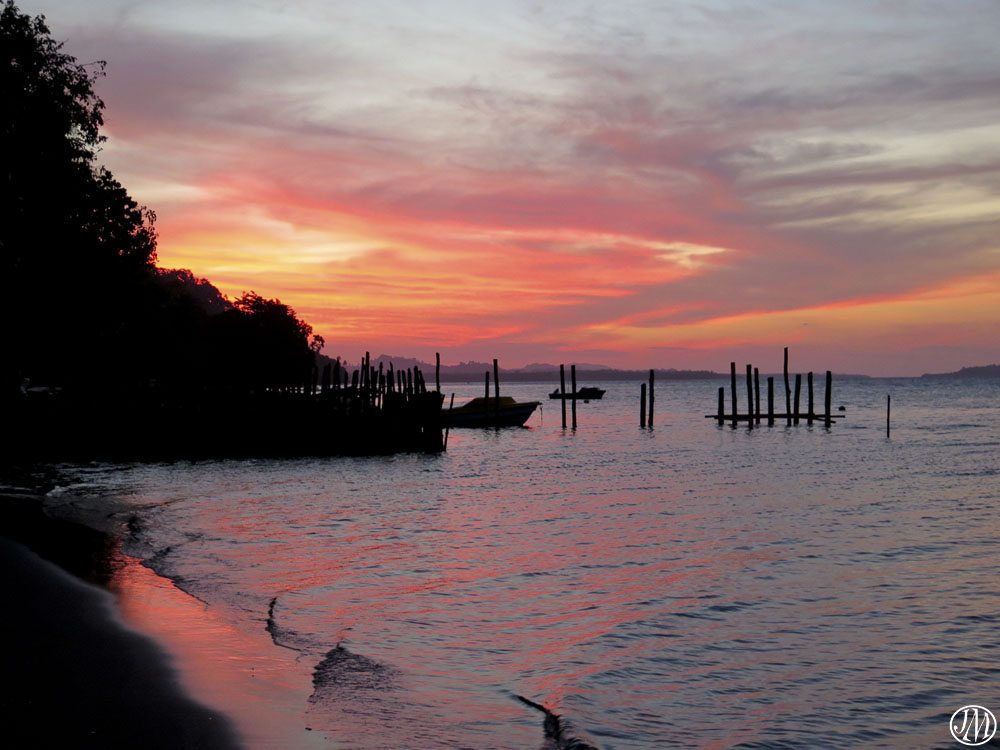
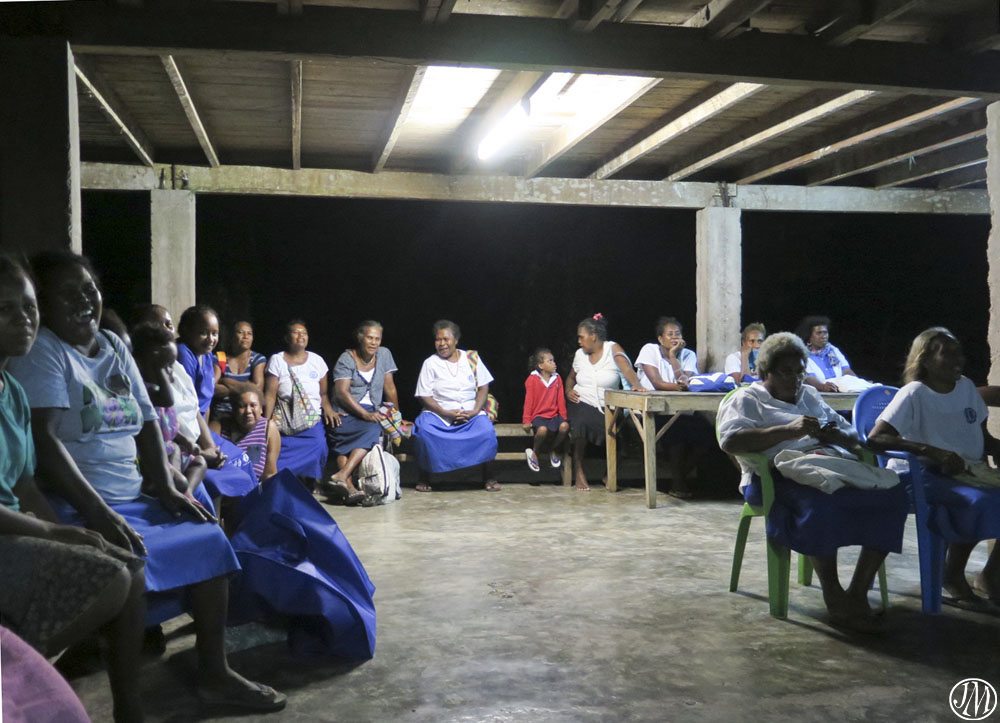
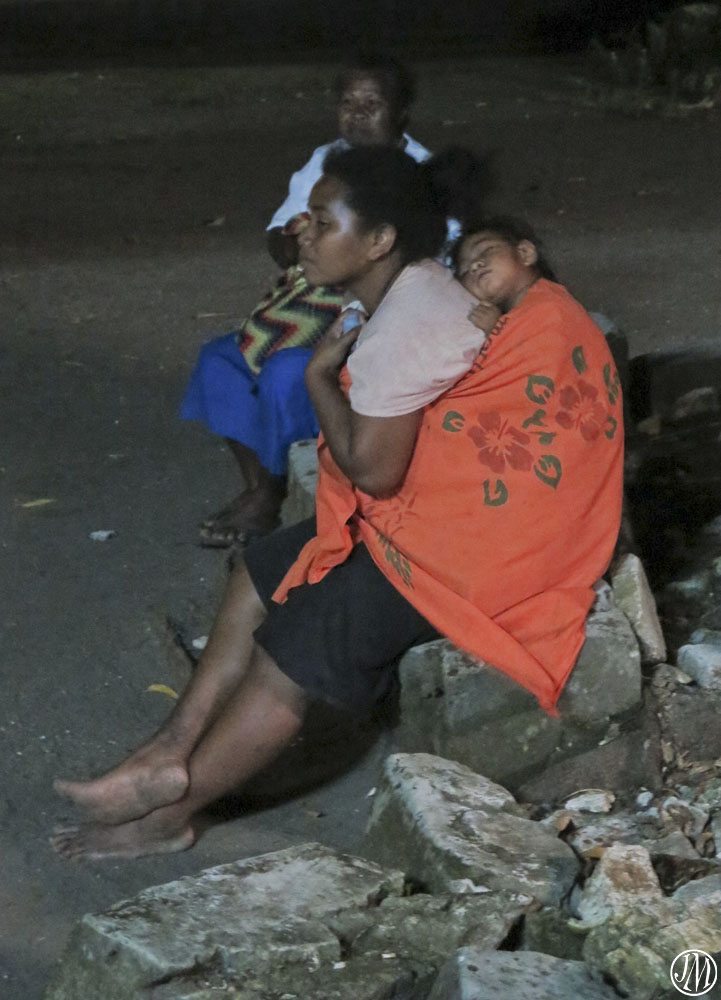
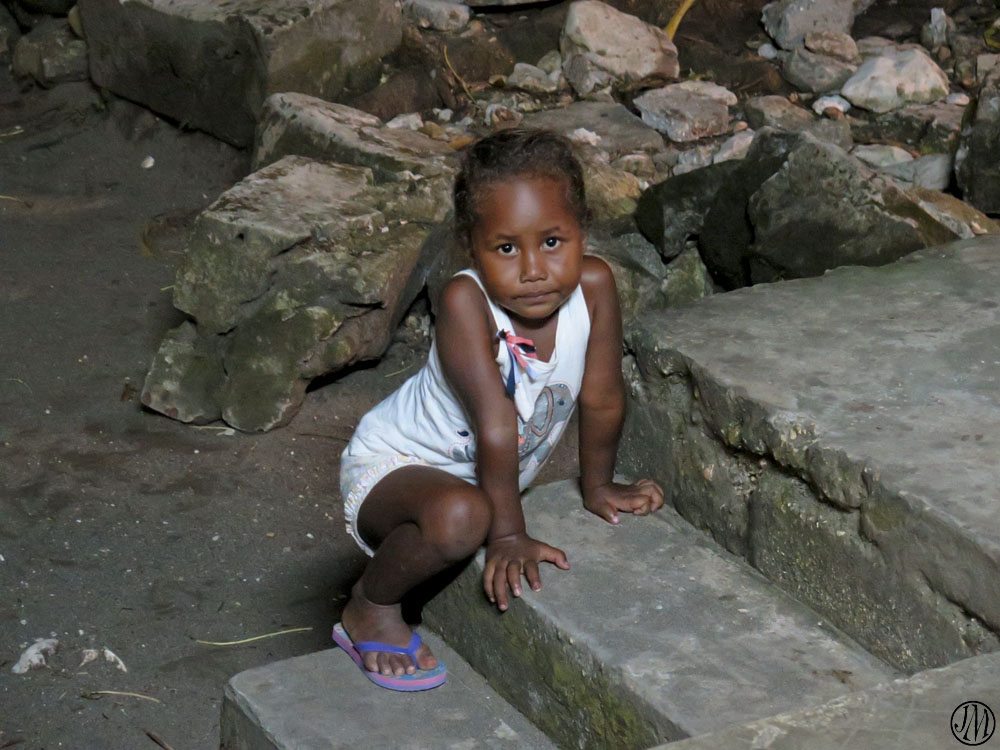
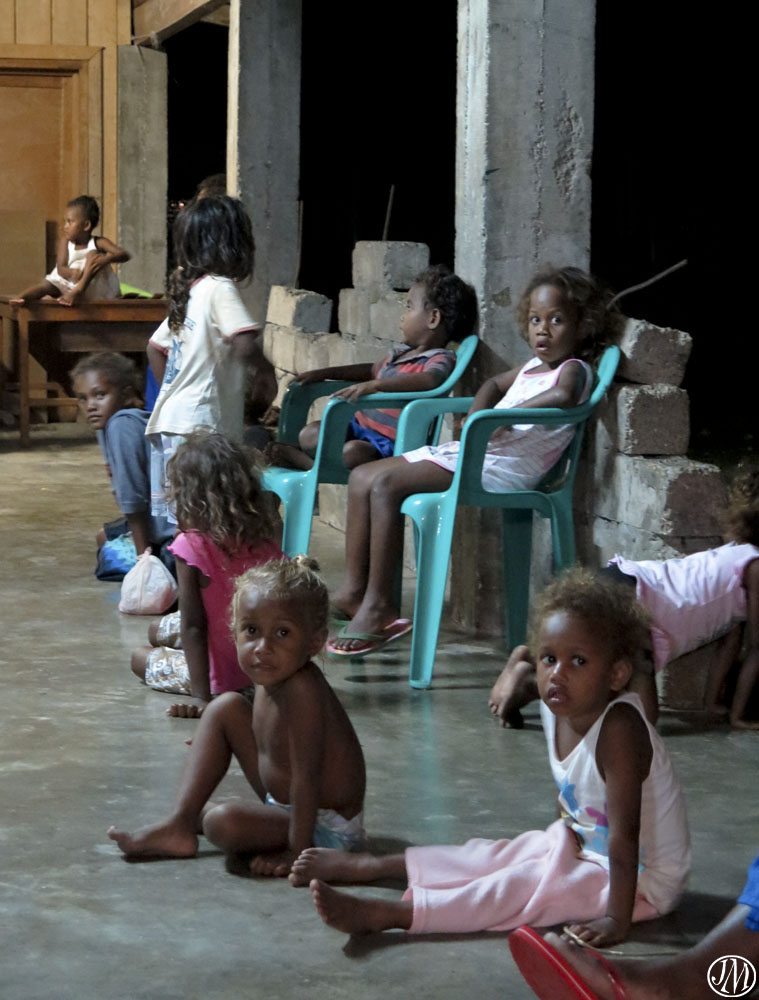
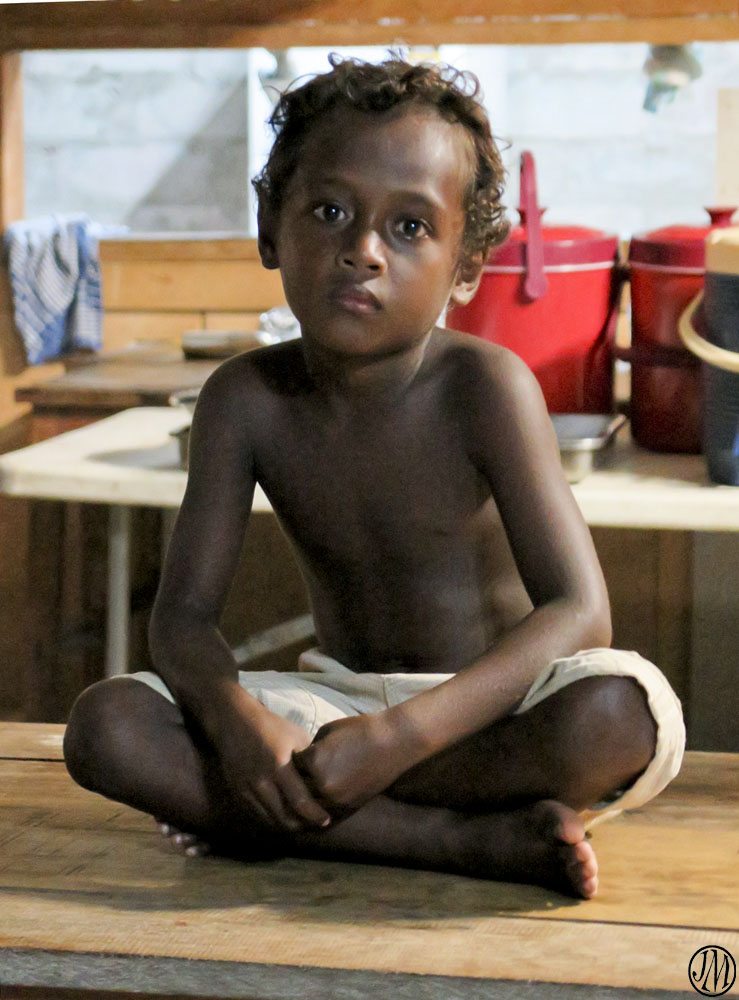
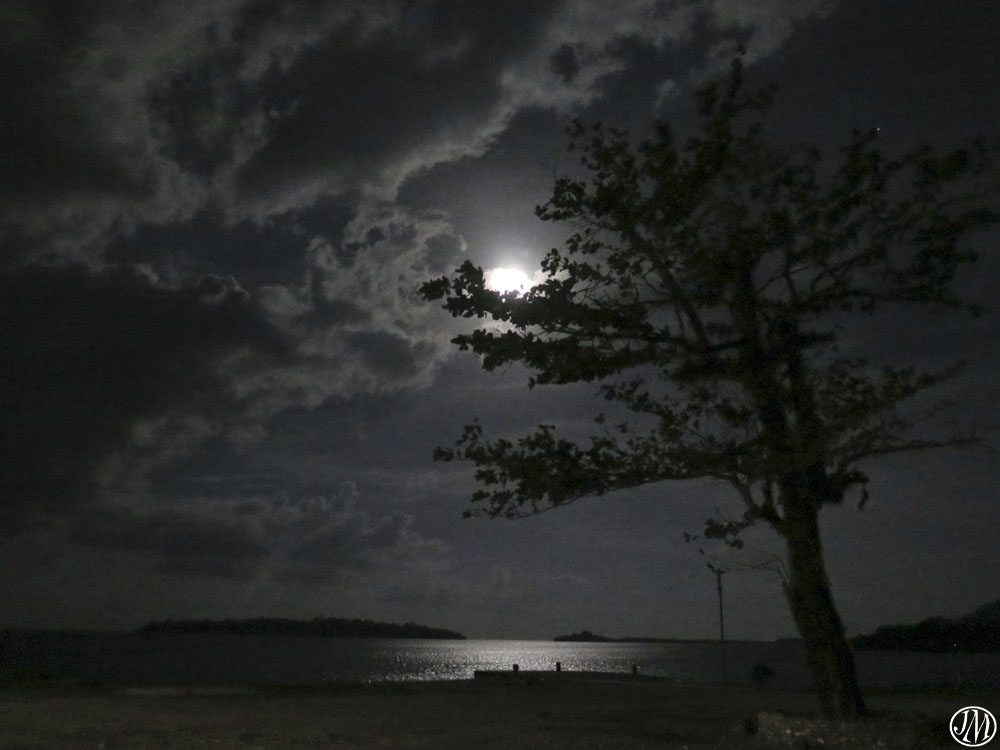

Wow Joanna! What a magical voyage. The photos are especially good this time – I can really feel the people through them. Thanks so much for sharing. xx
Hi Jo, Thrilled to come across this article ! (VSO 1967-8)
Hi Joana, I missed the opportunity to catch up with you on returning after 50 years. As you told me in Sweden during the Youth Power in Mariefred, you taught at Tasia in Isabel Province. I remembered the story during your stay in Isabel about a child who commented about the colour of your skin..
Cheers